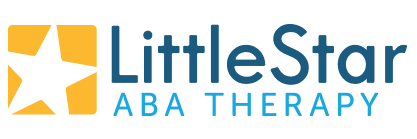Story you may have missed on WTHR, Channel 13…
Autism is a topic that garners a great deal of attention these days, both for the alarming number of children diagnosed with the condition to the research and funding targeted on finding a cause.
While the Federal government mandates educational services for children, that help disappears once they turn 21.
Patty Reed couldn’t be happier to watch her daughter Jessica work in the café at Lawrence Central High School.
“They are teaching her academics that she will need in daily life and, at the same time, preparing her for having a job when she finishes high school,” Reed said.
Her 18-year-old daughter has autism and will never go on to college or a career. She will never be able to fully care for herself.
“She’s not able to make decisions concerning her safety and manage her money and anything like that, so she, she will not be able to live on her own,” Reed said.
Reed’s hope is that her daughter will be able to hold a job and live in a group setting, yet she worries about her future.
“There’s not enough group homes, there’s not enough programs to train these individuals,” she said.
Nationwide, stories like Jessica’s have seen a 78 percent increase in just the past decade. According to the Centers for Disease Control, the autistic population has exploded since Jessica was diagnosed in the mid-1990s.
Two decades ago, one in 10,000 children were diagnosed with autism.
“Jessica is just at the cusp of autism diagnosis. Behind her, there’s a lot more kids coming who have autism,” Reed said.
Today in the United States, one-in-88 kids have autism, including one out of every 83 children here in Indiana. It is costing families an average of $70,000 a year to care for their child, including doctor visits and medications, behavioral and speech therapy, as well as expenses for things like special education and child care.
If those numbers mean nothing to you, maybe these will. Nationally, autism is costing Americans $126 billion a year. That’s with a lack of funding for many autistic adults.
“Parents will say their hope is that they live one day longer than their child with autism, because they are so afraid of what will happen to them once they become adults,” said Dr. Cathy Pratt, an autism expert at Indiana University.
Pratt says all of the research and attention to autism, including most of the funding, has been focused on children and causes. She doesn’t dispute how important that is, but stresses that it’s only part of the puzzle
“It’s not been as attractive to think about ‘How do we help people with autism, who are adults, find and maintain employment? How do we help them have meaningful lives and lives we envy?’ That has not been a very trendy conversation for people to have,” Pratt said.
No one knows that better than Christine Held.
Held’s daughter is an honor student and a standout golfer. Both of her sons have autism.
“My 19-year-old is severe and profound. He is totally non-verbal,” she said.
Her other son, 21-year-old Cameron, completed high school, but cannot find work. For now, he volunteers at his high school’s bookstore.
“Although he is pretty high-functioning and he’s very intelligent, he doesn’t communicate using words very well, so we are constantly helping him with those situations,” Held said.
A lack of resources and lack of understanding mean Cameron spends most of his time at home.
“I would prefer that my child was out working, paying taxes, rather than living off of the government, so I don’t know. Something has to be done,” Held said.
According to the Department of Labor, the unemployment rate among Americans with disabilities is four percent higher than those without disabilities.
Watch video here
